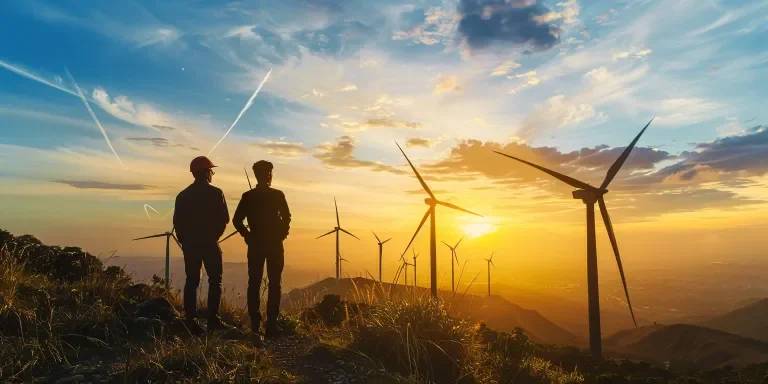The generation of electricity from wind is a testament to human ingenuity in harnessing nature’s power. This article delves into the intricacies of wind energy, shedding light on its principles, technology, environmental impacts, cost-effectiveness, and future prospects. As the world gravitates towards sustainable energy sources, understanding the role of wind power is crucial. Join us on a journey through the mechanics and marvels of generating electricity from wind.
Table of Contents:
– How wind energy works
– The technology behind wind turbines
– Environmental impacts of wind energy
– Cost-effectiveness of wind power
– The future of wind energy
How wind energy works
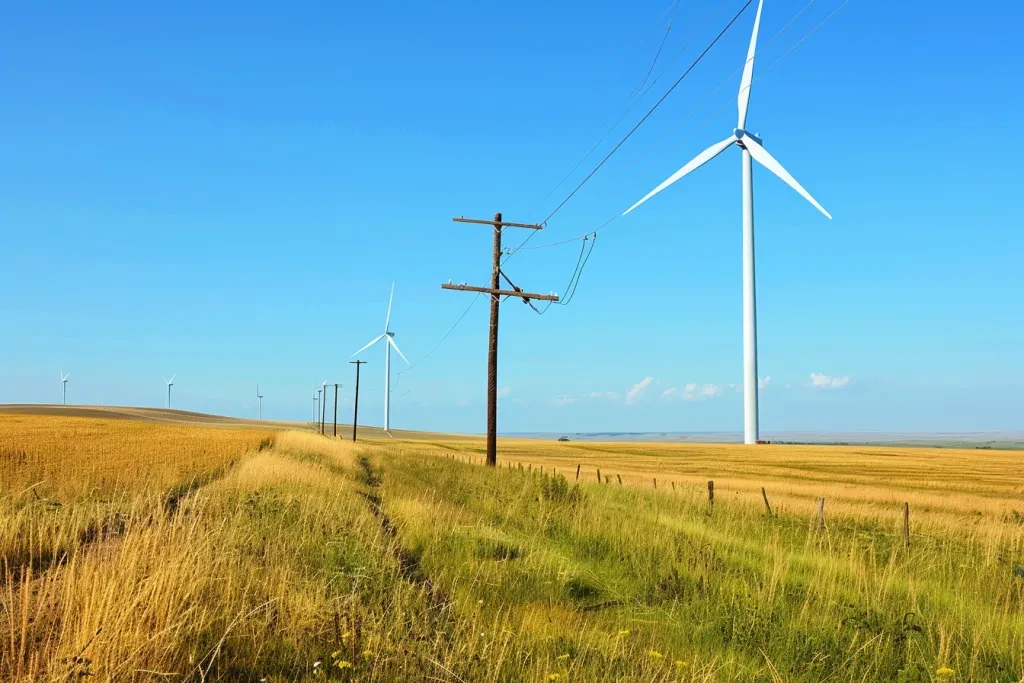
Wind energy harnesses the kinetic energy from wind, converting it into electrical power. This process begins with the wind’s force acting upon the blades of a turbine. As the wind blows, the blades spin, driving a rotor connected to the main shaft, which spins a generator to produce electricity. The efficiency of this process is influenced by factors such as wind speed, turbine design, and the landscape. Understanding the basics of wind energy conversion is essential for appreciating its potential as a renewable energy source.
The dynamics of wind energy conversion involve complex aerodynamics and mechanical systems. The blades, designed to capture as much wind as possible, play a crucial role. Their shape and material determine their efficiency in converting wind energy into mechanical energy. The rotor’s design, typically with three blades, balances efficiency with durability. This section of the article aims to demystify the science behind wind energy, making it accessible to all.
Wind energy’s scalability from small, individual turbines to large wind farms underscores its versatility. Small-scale turbines can power a single home or business, while vast arrays of turbines in wind farms can generate electricity on a grid-scale. This adaptability makes wind energy a compelling option for diverse applications, from remote, off-grid locations to major urban centers.
The technology behind wind turbines
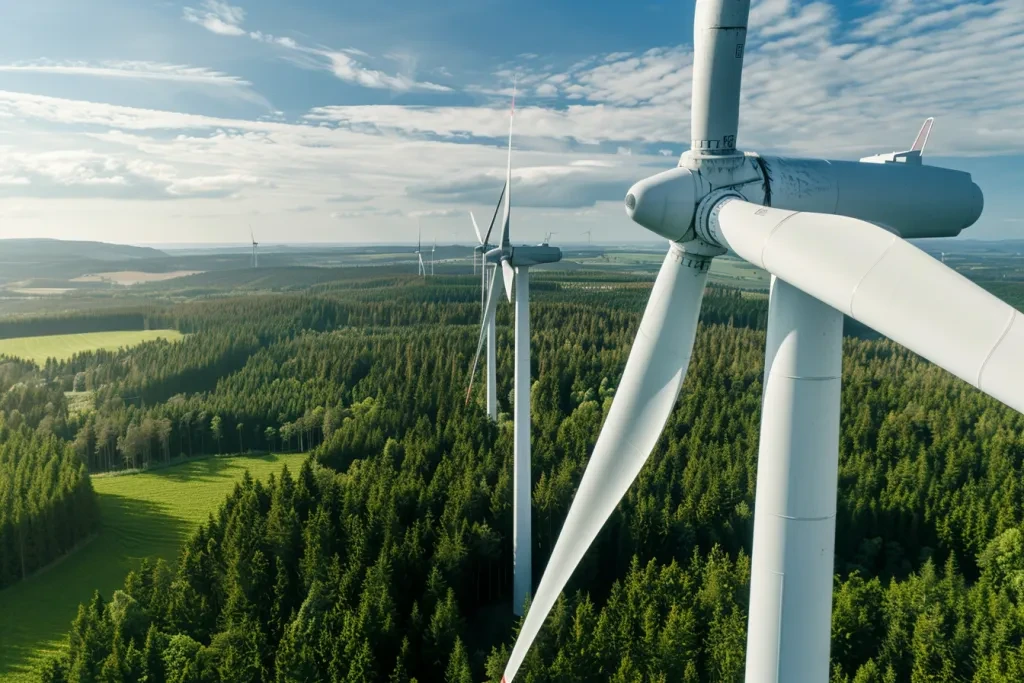
Wind turbines are marvels of modern engineering, embodying advancements in design, materials, and technology. The heart of a wind turbine is its generator, which converts mechanical energy into electricity. Innovations in generator technology, such as direct drive systems, have enhanced efficiency and reliability. The materials used in turbine construction, including lightweight composites, have also evolved, enabling larger, more potent turbines.
The siting of wind turbines is a critical aspect of maximizing their efficiency. Locations are carefully selected based on wind patterns, terrain, and environmental considerations. Advances in computational modeling and meteorological forecasting have improved the precision of site selection, optimizing wind energy production. The integration of turbines into the electrical grid has also seen significant technological progress, ensuring that the variable nature of wind does not affect grid stability.
Offshore wind turbines represent a frontier in wind energy technology. Situated in bodies of water, these turbines can harness stronger, more consistent winds than their land-based counterparts. Although offshore installations present additional challenges, including higher costs and complex logistics, they offer substantial energy generation potential. The development of floating turbine technology further expands the possibilities for offshore wind energy, allowing for deployment in deeper waters.
Environmental impacts of wind energy

Wind energy is celebrated for its low environmental footprint, especially when compared to fossil fuels. The generation of electricity from wind emits no greenhouse gases, contributing to climate change mitigation. Moreover, wind farms require relatively little land, preserving habitat and biodiversity. The visual and auditory impact of turbines, however, has raised concerns, emphasizing the need for thoughtful placement and design.
The lifecycle of a wind turbine, from manufacturing to decommissioning, involves environmental considerations. Efforts to minimize the ecological impact of these stages include using sustainable materials and recycling components. The comparison of wind energy’s environmental footprint with other energy sources reveals its advantages in promoting a cleaner, healthier planet.
Addressing the challenge of bird and bat mortality at wind farms has led to innovative solutions. These include better site selection, wildlife monitoring, and turbine technology designed to minimize risks to flying species. Continuous research and adaptive management strategies are essential for mitigating the ecological impacts of wind energy.
Cost-effectiveness of wind power
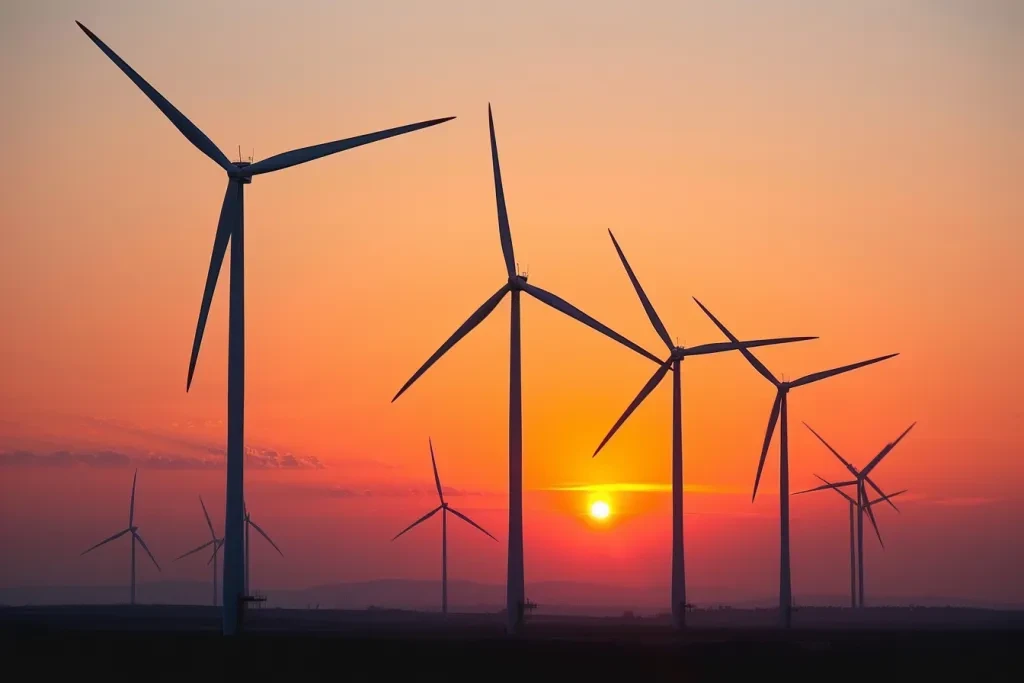
The economic viability of wind energy has significantly improved over the years, making it one of the most cost-competitive renewable energy sources. Advances in technology, economies of scale, and policy incentives have contributed to the decreasing cost of wind energy. Analyzing the cost-effectiveness of wind power involves considering initial investment, operation and maintenance costs, and the lifespan of turbines.
Government policies and subsidies have played a pivotal role in fostering the growth of wind energy. Tax credits, grants, and renewable energy mandates have helped offset the upfront costs of wind projects, encouraging investment and development. The evolving policy landscape continues to influence the economics of wind energy, reflecting its importance in achieving energy and environmental goals.
The comparison of wind energy costs with those of traditional and other renewable energy sources highlights its competitiveness. As the technology matures and deployment increases, wind energy is poised to become an even more economically attractive option for power generation.
The future of wind and energy
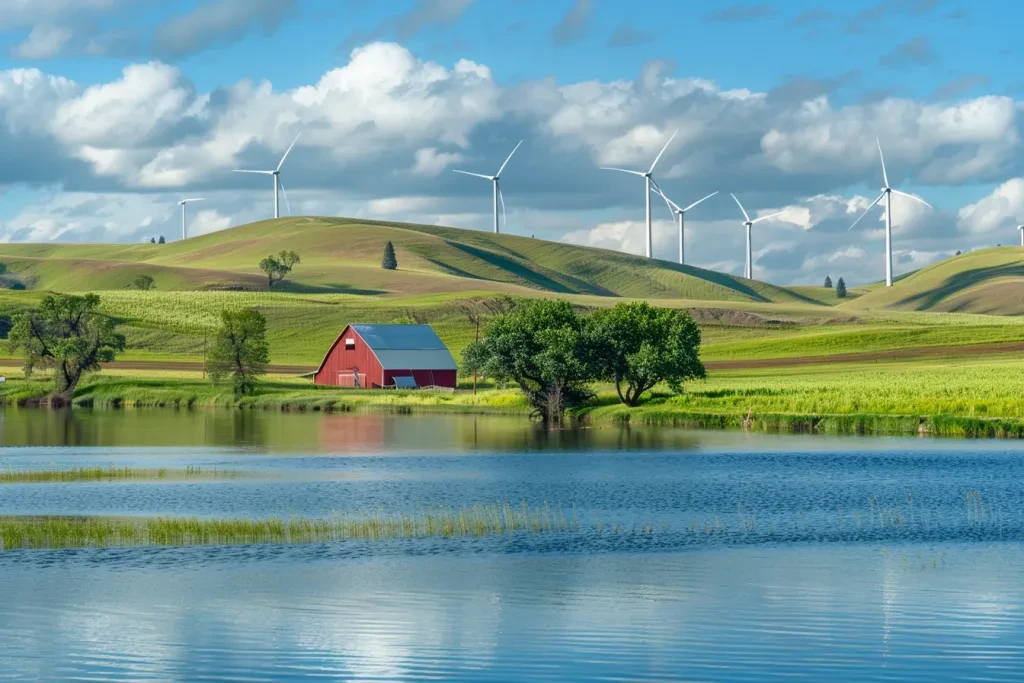
The future of wind energy is bright, with technological innovations and policy support driving its expansion. The potential for wind energy to contribute significantly to global energy needs is vast, especially as efforts to combat climate change intensify. Emerging technologies, such as enhanced turbine designs and energy storage solutions, promise to increase the efficiency and reliability of wind power.
The integration of wind energy into the broader energy system is a critical area of development. Innovations in grid technology and energy storage are enabling more effective management of the variability of wind power. The potential for wind energy to work in concert with other renewable sources, creating a sustainable, resilient energy system, is an exciting prospect.
The role of policy and market mechanisms in shaping the future of wind energy cannot be overstated. Continued support for research and development, along with incentives for wind energy deployment, will be crucial. As the world seeks sustainable solutions to its energy needs, wind energy stands out as a key player in the transition to a renewable energy future.
Conclusion:
Electricity generated by wind is a cornerstone of the renewable energy landscape. Through the exploration of its workings, technology, environmental impact, cost-effectiveness, and future prospects, the significance of wind energy is clear. As society advances towards sustainable energy solutions, the role of wind power is both promising and essential. Embracing wind energy is not just about generating power; it’s about powering a sustainable future.
